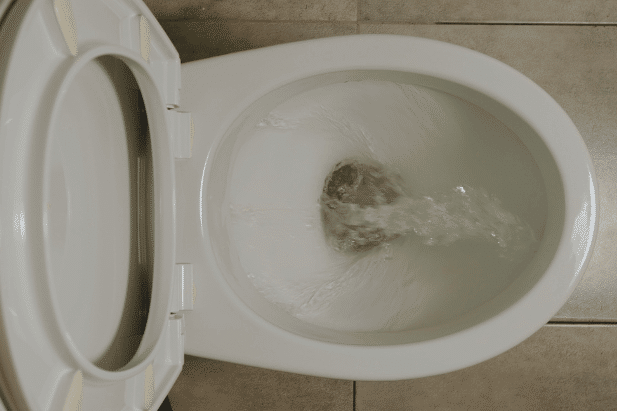ABOUT THE AUTHOR
Max Rose
Max Rose is the owner of Four Seasons Plumbing, a plumbing company in Asheville, North Carolina.

Is the toilet filling up slowly in your Asheville, NC, home? Is your toilet making a hissing sound? There are a few reasons your toilet may be doing this, but it’s a common problem for toilets. When you figure out the reason behind your slow-filling toilet, you will be one step closer to solving the problem. If you’re an experienced do-it-yourselfer, you might be able to fix it. However, if you try and fail, you might still need to call a plumber. Consider hiring a professional plumber to fix it right the first time.
Do you ever find yourself curious about the inner workings of a toilet? The process is really rather ingenious.
There are a few key components that ensure a successful flush every time. By depressing the handle, the rubber flapper (also called a float valve) is raised, allowing water to flow into the toilet. The water in the tank will then overflow into the bowl, effectively flushing the toilet.
The flapper gradually descends to its seated position on the flush valve as water is sent from the tank to the bowl. As the flapper seals off the water supply to the bowl, the fill valve (sometimes called a ballcock) refills the tank in preparation for the next flush.
Any time one of the moving parts of the toilet is blocked, weighed down by hard water scaling, or becoming too old, it can cause your toilet to malfunction and fill more slowly.
A typical toilet tank refill takes between one and two minutes, depending on the water pressure in your residence. Something may need to be fixed if it takes much longer than usual.
There are three potential causes of a slow-filling toilet:
The toilet’s water supply is managed by the knob that protrudes from the wall directly below the tank. If it’s broken or just partly open, it may not be able to provide the required volume of water at the required rate. Blockages in the valve’s water passageway caused by debris accumulation are another possible problem.
When troubleshooting, check sure the valve is fully open. Contact a professional plumber to inspect the valve for junk accumulation if completely opening it does not result in enough water flowing to replenish the tank.
A float ball is placed on top of the water in the tank to regulate the flow of water and to avoid flooding. The tank won’t fill properly if the float ball is weighed down by water. Because of this, either insufficient water will get into the tank, or the tank’s water level will rise slower than planned.
Troubleshooting: Take the tank cover off and see how much water is in there. A waterlogged float ball may be identified by a partially filled tank or a ball not floating near the tank’s rim. Changing the float ball is a rather simple plumbing task. Simply remove the worn-out float from the float arm and replace it with a new one.
Remember that float balls are relics of the past regarding bathroom plumbing. If you notice that this mechanism is failing, it may be time to upgrade the inner workings of your toilet.
The toilet tank’s fill valve is often mounted on a vertical tube-like fixture. The function of the fill valve is to regulate the amount of water entering the tank. Wear and tear, obstruction and misalignment are all potential problems for fill valves over time. The toilet may not fill with water due to the aforementioned problems.
If the water supply valve and a clogged float ball have been ruled out, the fill valve should be examined more closely. Check the valve for damage or improper installation within the tank. The supply tube and shut-off valve are connected to a tailpiece that extends through the bottom of the tank and is normally located on the left side of the tank.
When a toilet fill valve has been in operation for seven years or more, its moving components might begin to wear out.
You may attempt to fix the problem by cleaning any debris out of the valve or water system.
Instructions for taking off the top cap and clearing the fill valve of debris:
Related Plumbing Articles to Check Out:
ABOUT THE AUTHOR
Max Rose is the owner of Four Seasons Plumbing, a plumbing company in Asheville, North Carolina.